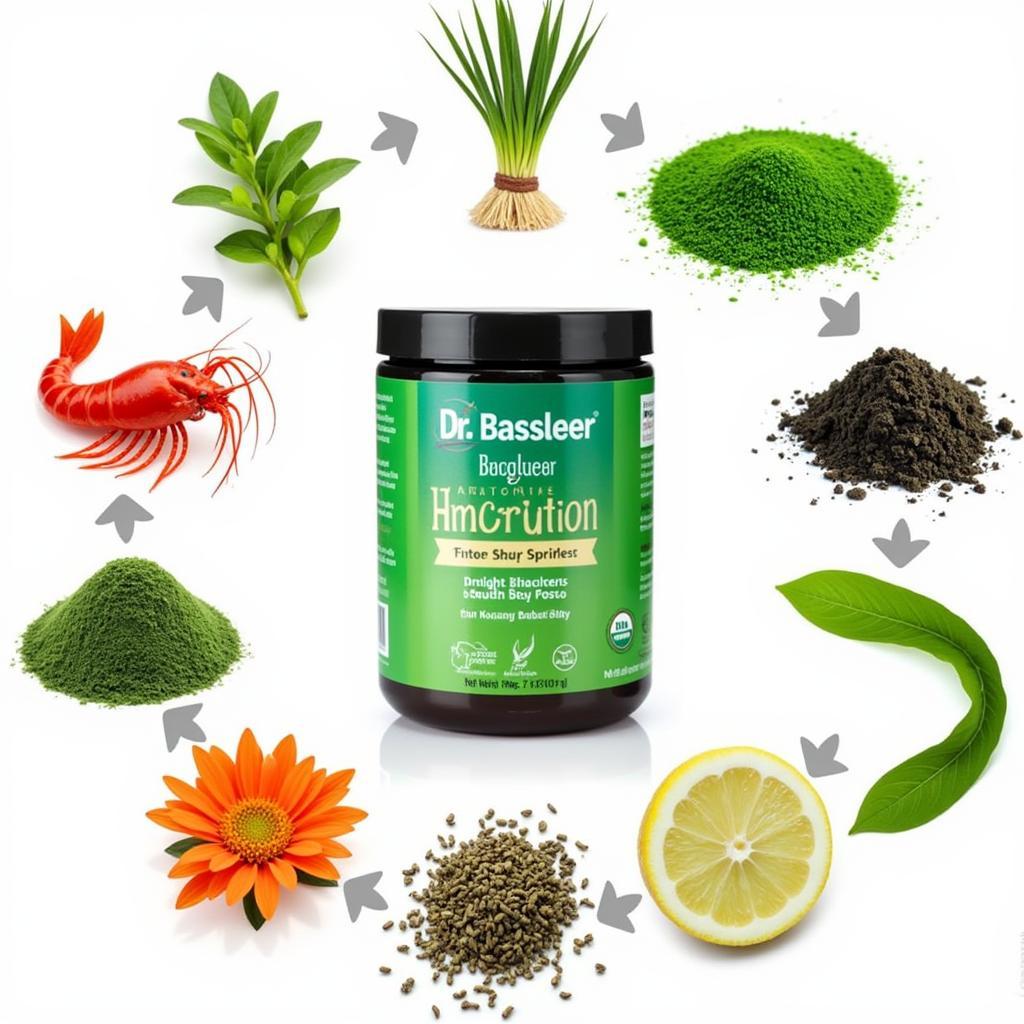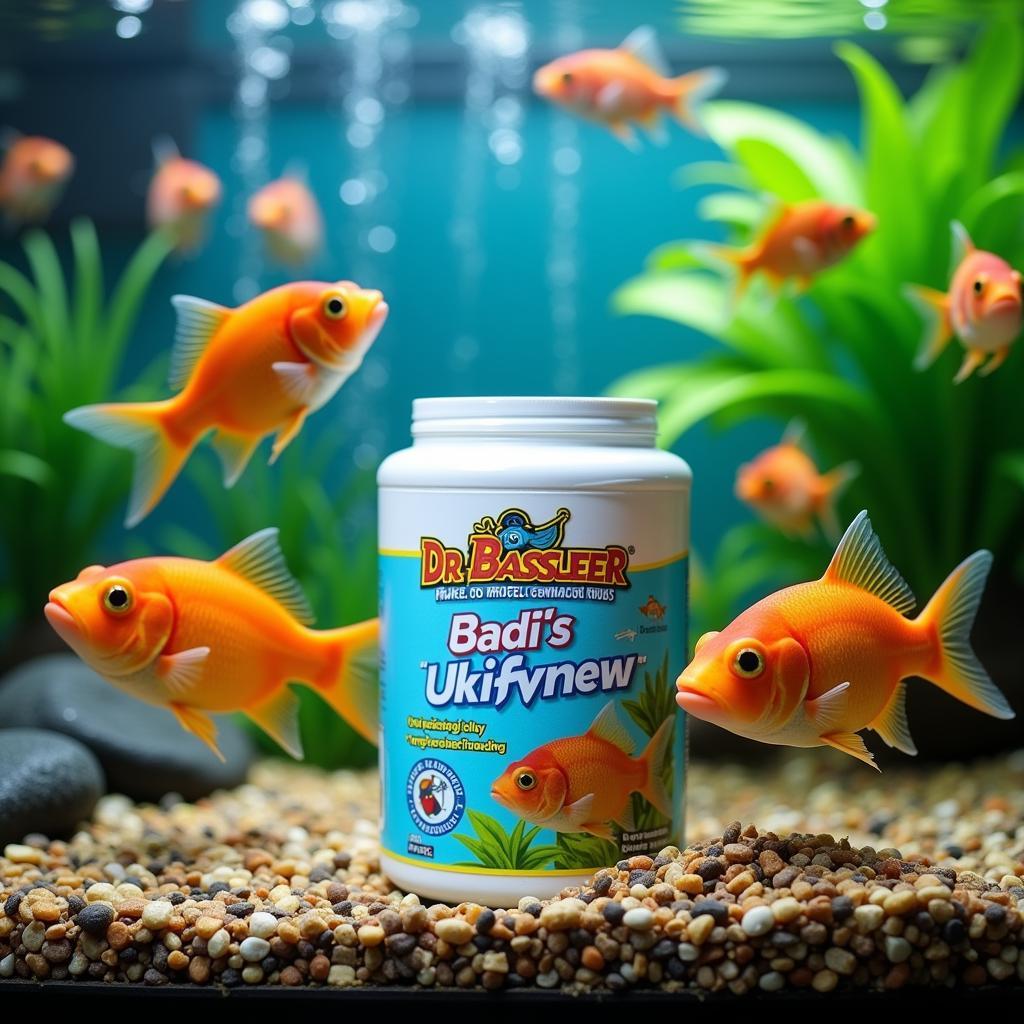Dr Bassleer Biofish Food is a popular choice among aquarists seeking high-quality nutrition for their fish. From understanding its ingredients to choosing the right type for your specific fish, this guide will cover everything you need to know about Dr Bassleer Fish Food to ensure your aquatic companions thrive. Let’s dive in and explore the world of Dr Bassleer!
Understanding the Benefits of Dr Bassleer Fish Food
Dr Bassleer Biofish Food prides itself on using high-quality ingredients, focusing on natural components and avoiding artificial fillers. This commitment to quality translates into several key benefits for your fish. The carefully balanced formulas provide optimal nutrition, supporting vibrant colors, healthy growth, and strong immune systems. Furthermore, Dr Bassleer offers a diverse range of food types tailored to different species’ needs, ensuring each fish receives the precise nutrients required for their specific dietary requirements. Using premium ingredients like krill, spirulina, and other natural sources also contributes to better digestion and reduced waste, promoting a cleaner and healthier aquarium environment.
 Dr Bassleer Biofish Food Ingredients
Dr Bassleer Biofish Food Ingredients
Choosing the Right Dr Bassleer Fish Food for Your Fish
With a wide variety of Dr Bassleer fish food options available, selecting the correct one can seem daunting. However, understanding your fish’s specific dietary needs is the key. Consider whether you have herbivores, carnivores, or omnivores. Dr Bassleer offers specialized formulas for each, catering to their unique digestive systems and nutritional requirements. Also, factor in the size and age of your fish. Smaller fish and fry require smaller pellet sizes, while larger, mature fish benefit from larger, more substantial food. Lastly, think about the specific species. Certain species, like discus or goldfish, have unique needs that Dr Bassleer addresses with tailored formulas.
 Dr Bassleer Biofish Food Types
Dr Bassleer Biofish Food Types
Feeding Guidelines and Best Practices
How much and how often should you feed your fish Dr Bassleer Biofish Food? The general rule is to feed only what your fish can consume within a few minutes, typically once or twice a day. Overfeeding can lead to water quality issues, so it’s best to err on the side of caution. Observe your fish closely during feeding to gauge their appetite and adjust the amount accordingly. Remove any uneaten food after a few minutes to prevent it from decomposing and polluting the water. Variety is also important. While a staple Dr Bassleer formula is excellent, consider supplementing with occasional treats or live foods to provide a well-rounded diet and stimulate natural foraging behaviors.
Dr Bassleer Biofish Food: Is it Worth the Investment?
Is Dr Bassleer fish food worth the investment compared to other brands? Many aquarists believe so. The commitment to high-quality ingredients, the variety of specialized formulas, and the positive impact on fish health often justify the slightly higher price point. Investing in quality nutrition contributes significantly to your fish’s overall well-being, reducing the risk of disease and promoting longevity.
 Healthy Fish Eating Dr. Bassleer Biofish Food
Healthy Fish Eating Dr. Bassleer Biofish Food
Conclusion
Dr Bassleer Biofish Food offers a comprehensive range of high-quality nutrition solutions for a variety of fish species. By understanding your fish’s specific dietary needs and following proper feeding guidelines, you can harness the benefits of Dr Bassleer fish food to ensure your aquatic companions live long, healthy, and vibrant lives. Choosing the right Dr Bassleer fish food is an investment in your fish’s well-being.
FAQ
- Where can I buy Dr Bassleer fish food? It’s readily available at most reputable aquarium stores and online retailers.
- What is the shelf life of Dr Bassleer fish food? Check the packaging for specific expiration dates, but generally, it lasts for several months if stored properly in a cool, dry place.
- Can I mix different types of Dr Bassleer fish food? Yes, you can mix different formulas to provide a more varied diet.
- My fish aren’t eating Dr Bassleer food, what should I do? Try a different formula or check your water parameters to ensure they are optimal.
- Is Dr Bassleer food suitable for all aquarium fish? While Dr Bassleer offers a wide range of formulas, it’s always best to check if a specific formula is suitable for your particular fish species.
6.. How do I transition my fish to Dr. Bassleer food? Gradually mix the new food with their current food over a period of a few days to a week. - What are the signs that my fish are benefitting from Dr. Bassleer food? Look for increased activity levels, vibrant colors, healthy growth, and a reduction in disease.
Common Scenarios and Questions:
- Scenario: My Betta fish seems lethargic after switching to Dr. Bassleer food. Question: Could the food be the cause, or is there something else wrong?
- Scenario: I have a community tank with various fish species. Question: Which Dr. Bassleer foods can I use to cater to everyone’s needs?
- Scenario: My fish produce a lot of waste after eating. Question: Is this normal with Dr. Bassleer food, or am I overfeeding?
Further Reading and Resources on Mina Cones Food:
- Check out our article on “Optimizing Your Aquarium Environment” for tips on maintaining a healthy tank.
- Learn more about “Common Aquarium Fish Diseases and Their Prevention” in our detailed guide.
Need help? Contact us!
Phone: 02437655121
Email: [email protected]
Address: 3PGH+8R9, ĐT70A, thôn Trung, Bắc Từ Liêm, Hà Nội, Việt Nam. Our customer service team is available 24/7.